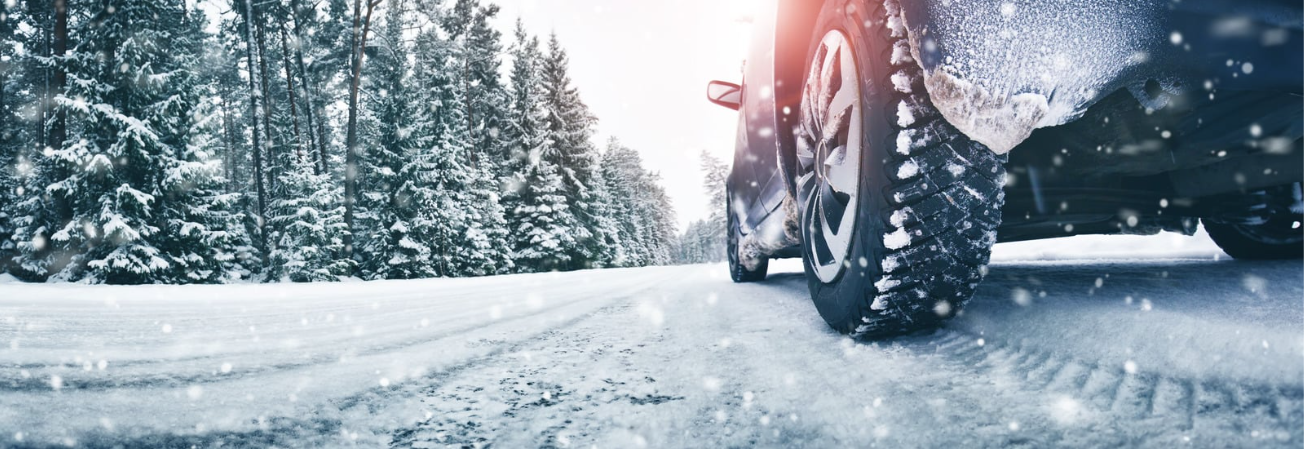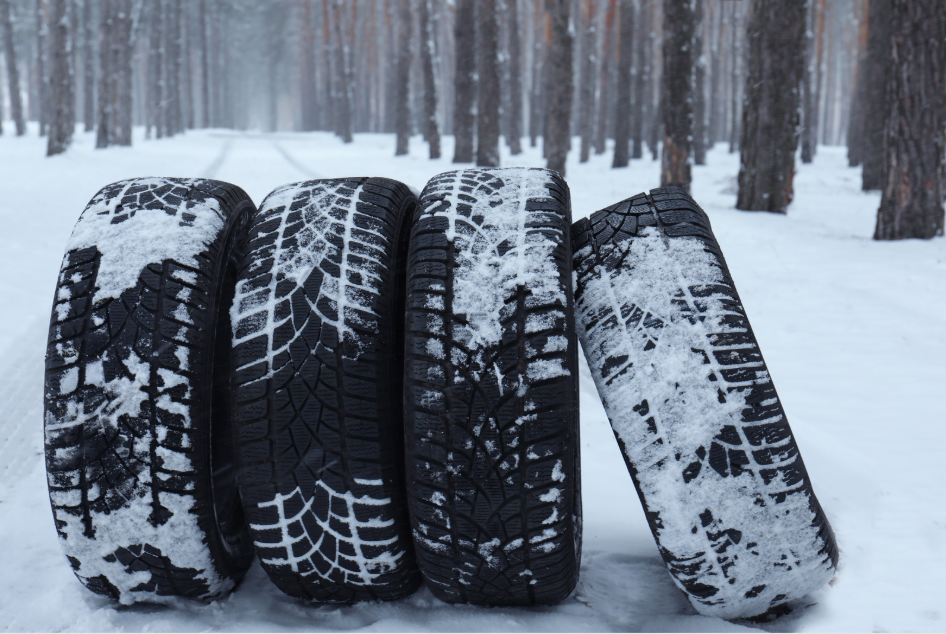BRC News

10 Reasons Why Winter Tyres Are Essential: A Complete Guide to Safe Winter Driving
How to Choose Winter Tyres: A Complete Guide to Safe Winter Driving
Winter tyres are specially designed for cold-season driving. They are made from a softer rubber compound that remains flexible even at low temperatures. Unlike summer tyres, they provide better traction on snow, ice, and slush — ensuring safer driving and shorter braking distances.
The Rubber Compound of Winter Tyres
The rubber composition of winter tyres is enriched with silica compounds that allow the rubber to perform effectively even at temperatures as low as –30°C.
This means that winter tyres do not harden in the cold but maintain excellent grip on uneven and slippery surfaces.
They also respond more precisely to road conditions, helping the driver maintain control of the vehicle.
The Importance of Tread Pattern for Snow and Ice
The tread pattern is one of the most crucial elements of a winter tyre.
A system of deep grooves and sipes helps to effectively remove snow and water from the tyre surface, reducing the risk of skidding or hydroplaning.
The more intricate the tread pattern, the better the grip on icy or slushy roads.

Why Are Winter Tyres Essential in Baltic Weather Conditions?
The Baltic region is known for unpredictable winter weather – frequent temperature changes, moisture, ice, and snow.
That’s why winter tyres are not just recommended — they are essential for every driver who values safety.
Winter Driving Conditions in Lithuania and Latvia
Every year, hundreds of traffic incidents occur due to improper or worn-out tyres.
Slippery roads, uncleared streets, and sudden weather changes make high-quality winter tyres a crucial safety measure.
When Are Winter Tyres Required by Law?
According to Lithuanian law, winter tyres are mandatory from November 10 to April 1.
The tread depth must be at least 3 mm, but experts recommend 4–5 mm for optimal safety.
How to Choose the Right Winter Tyres
When selecting winter tyres, consider your vehicle type, driving style, and local climate.
Studded vs. Non-Studded Tyres
| Type | Advantages | Disadvantages |
|---|---|---|
| Studded | Better grip on ice, shorter braking distance | Louder, not allowed in some countries |
| Non-studded (Friction) | Quieter, lower fuel consumption | Slightly weaker grip on pure ice |
How to Read Tyre Markings
Each tyre’s sidewall contains a combination of letters and numbers, for example: 205/55 R16 94H.
Here’s what it means:
-
205 – tyre width in millimetres
-
55 – aspect ratio (height to width percentage)
-
R16 – rim diameter in inches
-
94H – load and speed index
Additionally, winter tyres are marked with a snowflake symbol (3PMSF) and a mountain icon, which certify them for severe winter use.
Most Popular Winter Tyre Brands
Some of the most trusted winter tyre manufacturers include:
-
Nokian Tyres – Finnish brand specialized in extreme cold conditions.
-
Michelin – long-lasting, fuel-efficient tyres suitable for long-distance driving.
-
Continental – excellent grip and short braking distances.
-
Goodyear – innovative tread designs and high comfort.
All these brands offer a wide selection for passenger cars, SUVs, and light commercial vehicles.
Winter Tyre Maintenance – How to Extend Their Lifespan
Properly maintained winter tyres can last up to 5–6 seasons without losing performance.
How to Store Tyres in Summer
-
Clean off dirt, salt, and sand.
-
Store vertically (without rims) or horizontally (with rims).
-
Keep in a cool, dark place, away from direct sunlight.
-
Avoid storing near heat sources, as heat damages the rubber.
When to Replace Your Winter Tyres
Replace them when the tread depth is less than 4 mm, or if cracks, uneven wear, or aging signs appear.
Even if tyres look fine, it’s recommended to replace them after 6 years.
Economic and Environmental Benefits of Winter Tyres
How Proper Tyres Save Fuel
Correctly inflated and balanced tyres reduce rolling resistance, helping your car consume less fuel.
You can save up to 0.3–0.5 litres per 100 km by maintaining them properly.
Winter Tyres and Environmental Impact
Many tyre manufacturers now use recycled materials, natural oils, and eco-friendly compounds that reduce CO₂ emissions.
For instance, Michelin aims to produce tyres made from 100% sustainable materials by 2050.

Common Mistakes Drivers Make
-
Changing tyres too late.
By mid-November, roads are often icy — delaying the change is risky. -
Changing tyres too late.
By mid-November, roads are often icy — delaying the change is risky. -
Mixing different tyres.
Combining two different sets can cause uneven grip and loss of control. -
Incorrect tyre pressure.
Too low or too high pressure increases wear and extends braking distance. -
Improper storage.
Heat or sunlight can harden the rubber and reduce tyre life.
Book Your Tyre Change Appointment
Vilnius: +370 685 39 345
Klaipėda: +370 650 54 084
Online booking: https://lt.brcauto.eu/registracija-i-autoservisa
FAQ – Frequently Asked Questions About Winter Tyres
1. When should I switch to winter tyres?
In Lithuania, winter tyres are mandatory from November 10 to April 1, but it’s recommended to switch once temperatures drop below +7°C.
2. What’s the difference between studded and non-studded winter tyres?
Studded tyres offer better traction on ice, while non-studded are quieter and more fuel-efficient.
3. Can I use winter tyres in summer?
Technically yes, but not recommended. The rubber is too soft and wears out faster, increasing fuel use.
4. How can I tell if my tyres are still safe?
Check tread depth (minimum 3 mm) and manufacturing date — tyres older than 6 years lose elasticity.
5. Do all winter tyres fit every vehicle?
No. Each vehicle requires specific size, load index, and speed rating.
6. Where can I buy quality winter tyres?
Choose certified dealers – they provide branded tyres and professional installation services.
Register your tyre change at BRC Auto Service, and our experts will help you choose the right winter tyres for your vehicle.
Conclusion: Why It Pays to Invest in Quality Winter Tyres
High-quality winter tyres are not a luxury – they’re a necessity for safe driving. They:
-
Ensure shorter braking distances
-
Provide stability and control on icy and snowy roads
-
Reduce accident risk
-
Help you save fuel and money in the long term
Investing in safety always pays off — every metre of braking distance can make a difference during winter driving.
✅ Source: Lithuanian Transport Safety Administration
BRC Autocenter – All car services in one place!
